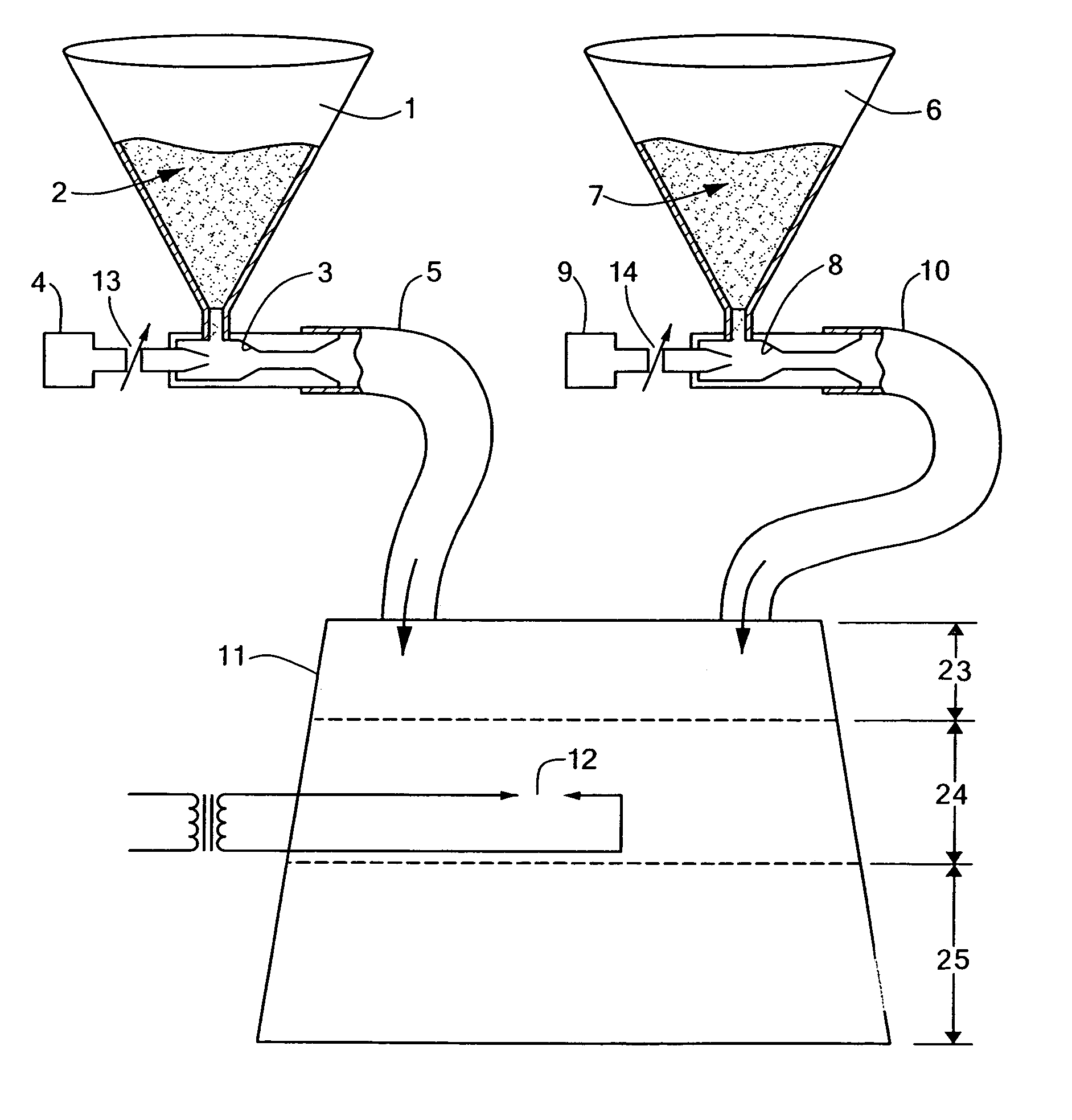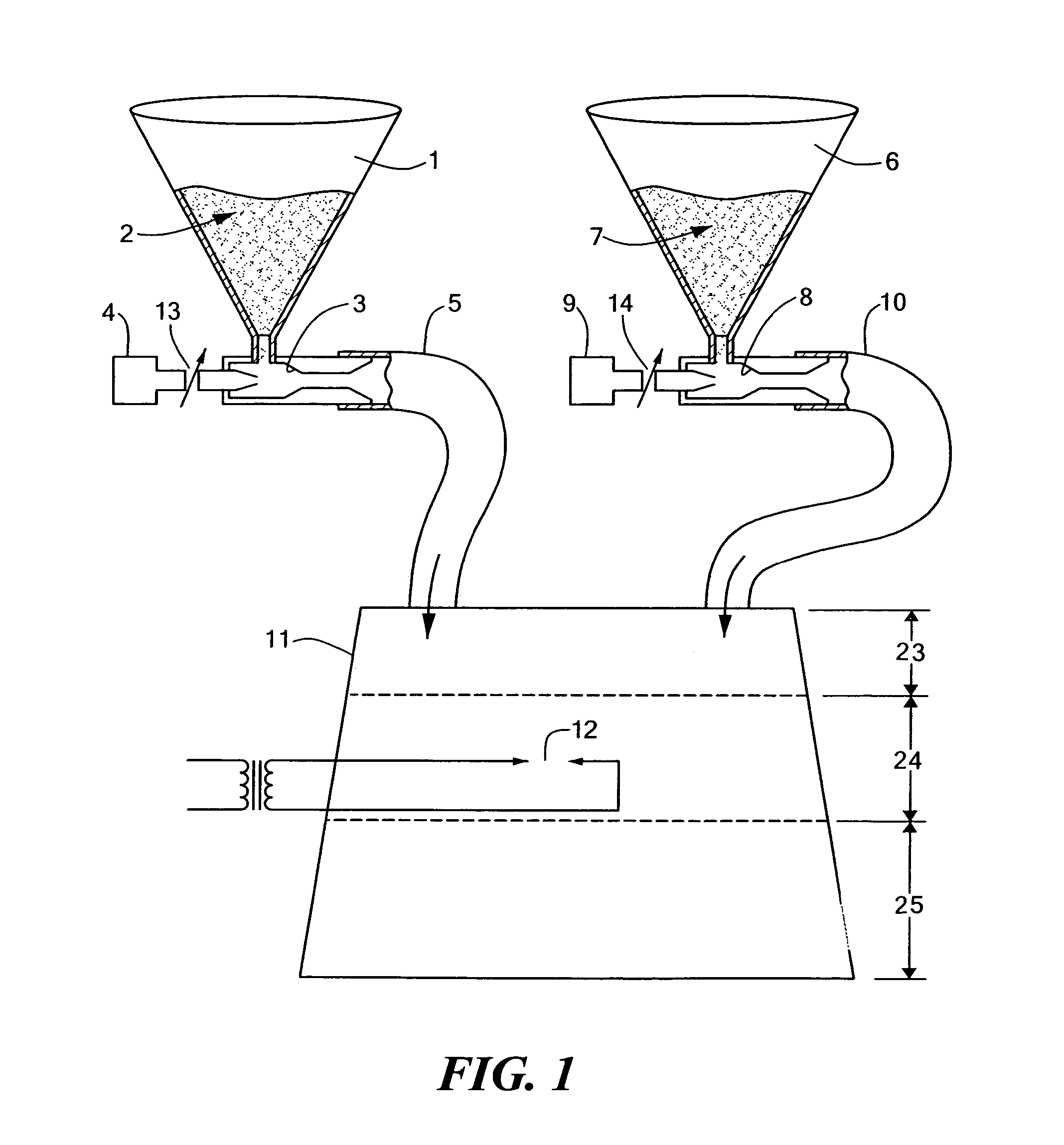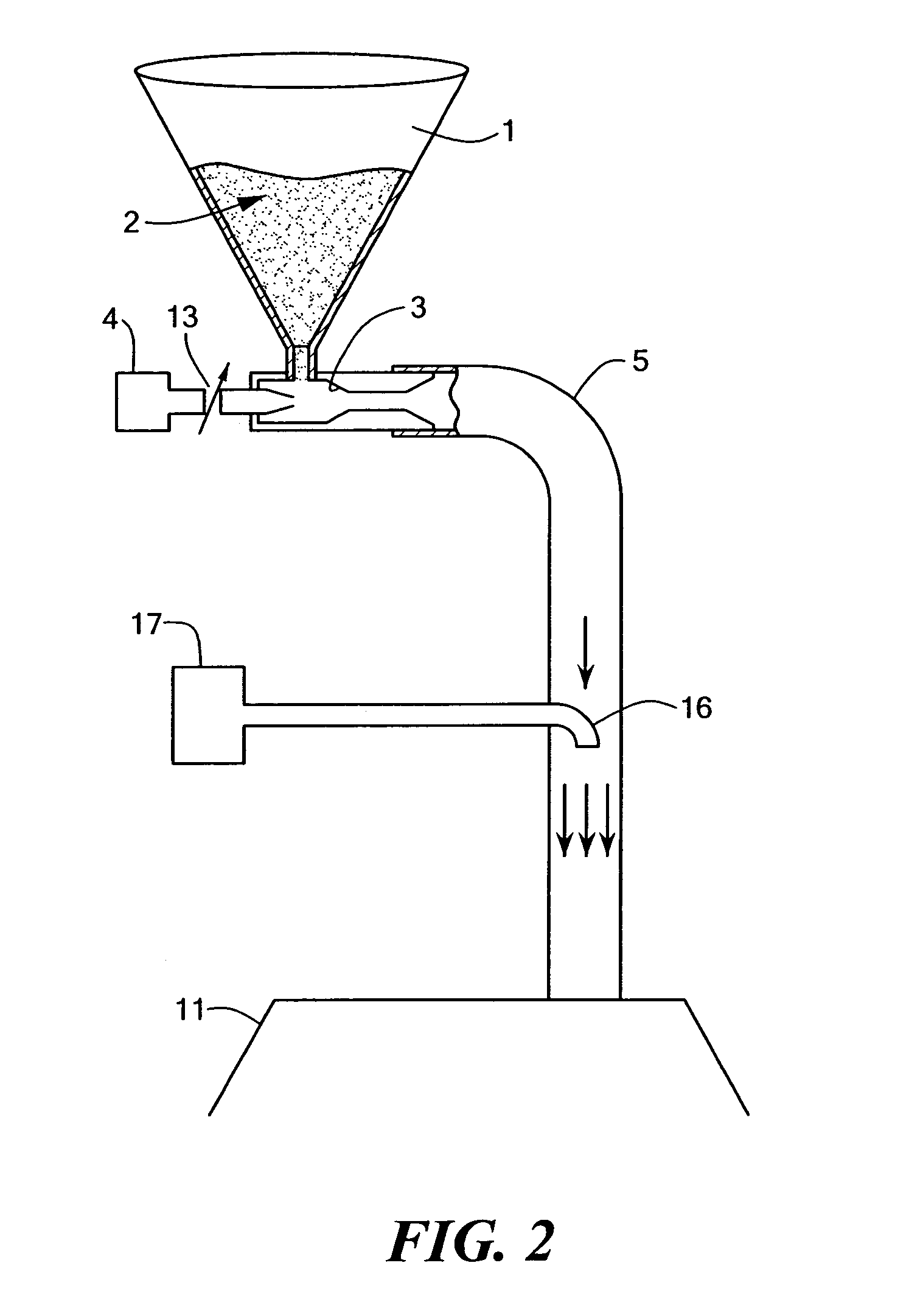Process and apparatus for highway marking
a technology of highway marking and process, applied in the direction of lighting and heating equipment, roads, instruments, etc., can solve the problems of affecting the appearance of highway marking, etc., and achieve the effect of high reflection and durabl
- Summary
- Abstract
- Description
- Claims
- Application Information
AI Technical Summary
Benefits of technology
Problems solved by technology
Method used
Image
Examples
Embodiment Construction
[0038]FIG. 1 illustrates a typical embodiment of apparatus employed in this invention. Hopper (1) contains the metallic fuel powder (2) typically aluminum powder or silicon powder. Other suitable combustible powders include zinc, magnesium, zirconium, and chromium. Mixtures of two or more combustible powders can also be used. Hopper (6) contains the powdered chemical oxidizer (7), typically ammonium, potassium or sodium nitrate. The non-combustible ceramic material, typically silicon or titanium dioxide, can be combined with the fuel powder, the chemical oxidizer or both. Each hopper feeds the powder by gravity into a venturi (3 and 8) fed by air or oxygen (4 and 9). The gas flowing through the venturi is controlled by valves (13) or (14) and aspirates the powder into the air stream. The air streams from both hoppers travel in separate supply lines (5) and (10) and combine in the combustion chamber (11) where the airstreams are mixed and ignited, typically by an electric arc (12) or...
PUM
| Property | Measurement | Unit |
|---|---|---|
| temperature | aaaaa | aaaaa |
| temperature | aaaaa | aaaaa |
| weight | aaaaa | aaaaa |
Abstract
Description
Claims
Application Information
 Login to View More
Login to View More - R&D
- Intellectual Property
- Life Sciences
- Materials
- Tech Scout
- Unparalleled Data Quality
- Higher Quality Content
- 60% Fewer Hallucinations
Browse by: Latest US Patents, China's latest patents, Technical Efficacy Thesaurus, Application Domain, Technology Topic, Popular Technical Reports.
© 2025 PatSnap. All rights reserved.Legal|Privacy policy|Modern Slavery Act Transparency Statement|Sitemap|About US| Contact US: help@patsnap.com



